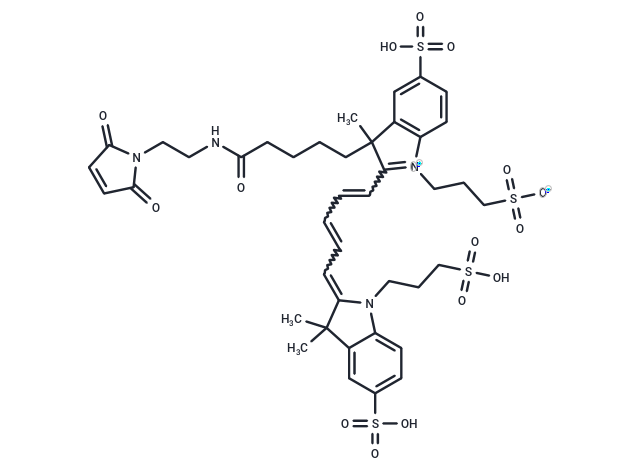 Your shopping cart is currently empty
Your shopping cart is currently empty

Alexa fluor 647 maleimide is a water-soluble fluorescent dye that maintains stability under a broad range of physiological conditions. Alexa fluor 647 maleimide facilitates the covalent attachment of fluorescent groups to proteins through selective reaction with thiol groups, thereby enabling precise labeling. This labeling method offers both high sensitivity and specificity, allowing detection of proteins at very low concentrations. Alexa fluor 647 maleimide is widely applied in the study of protein expression and localization, and it can also be conjugated to antibodies for labeling cell surface antigens or specific proteins within tissues [Ex/Em(nm)=651/671].

| Pack Size | Price | USA Warehouse | Global Warehouse | Quantity |
|---|---|---|---|---|
| 1 mg | $195 | - | In Stock | |
| 5 mg | $483 | - | In Stock |
| Description | Alexa fluor 647 maleimide is a water-soluble fluorescent dye that maintains stability under a broad range of physiological conditions. Alexa fluor 647 maleimide facilitates the covalent attachment of fluorescent groups to proteins through selective reaction with thiol groups, thereby enabling precise labeling. This labeling method offers both high sensitivity and specificity, allowing detection of proteins at very low concentrations. Alexa fluor 647 maleimide is widely applied in the study of protein expression and localization, and it can also be conjugated to antibodies for labeling cell surface antigens or specific proteins within tissues [Ex/Em(nm)=651/671]. |
| Synonyms | 3H-Indolium, 2-[5-[1,3-dihydro-3,3-dimethyl-5-sulfo-1-(3-sulfopropyl)-2H-indol-2-ylidene]-1,3-pentadien-1-yl]-3-[5-[[2-(2,5-dihydro-2,5-dioxo-1H-pyrrol-1-yl)ethyl]amino]-5-oxopentyl]-3-methyl-5-sulfo-1-(3-sulfopropyl)-, inner salt |
| Molecular Weight | 967.11 |
| Formula | C41H50N4O15S4 |
| Cas No. | 1825332-75-9 |
| Smiles | O=C1C=CC(=O)N1CCNC(=O)CCCCC2(C=3C=C(C=CC3[N+](=C2C=CC=CC=C4N(C5=CC=C(C=C5C4(C)C)S(=O)(=O)O)CCCS(=O)(=O)O)CCCS(=O)(=O)[O-])S(=O)(=O)O)C |
| Color | Purple |
| Appearance | Solid |
| Storage | keep away from direct sunlight,store at low temperature | store at -20°C | Shipping with blue ice/Shipping at ambient temperature. |
| Size | Quantity | Unit Price | Amount | Operation |
|---|

Copyright © 2015-2025 TargetMol Chemicals Inc. All Rights Reserved.